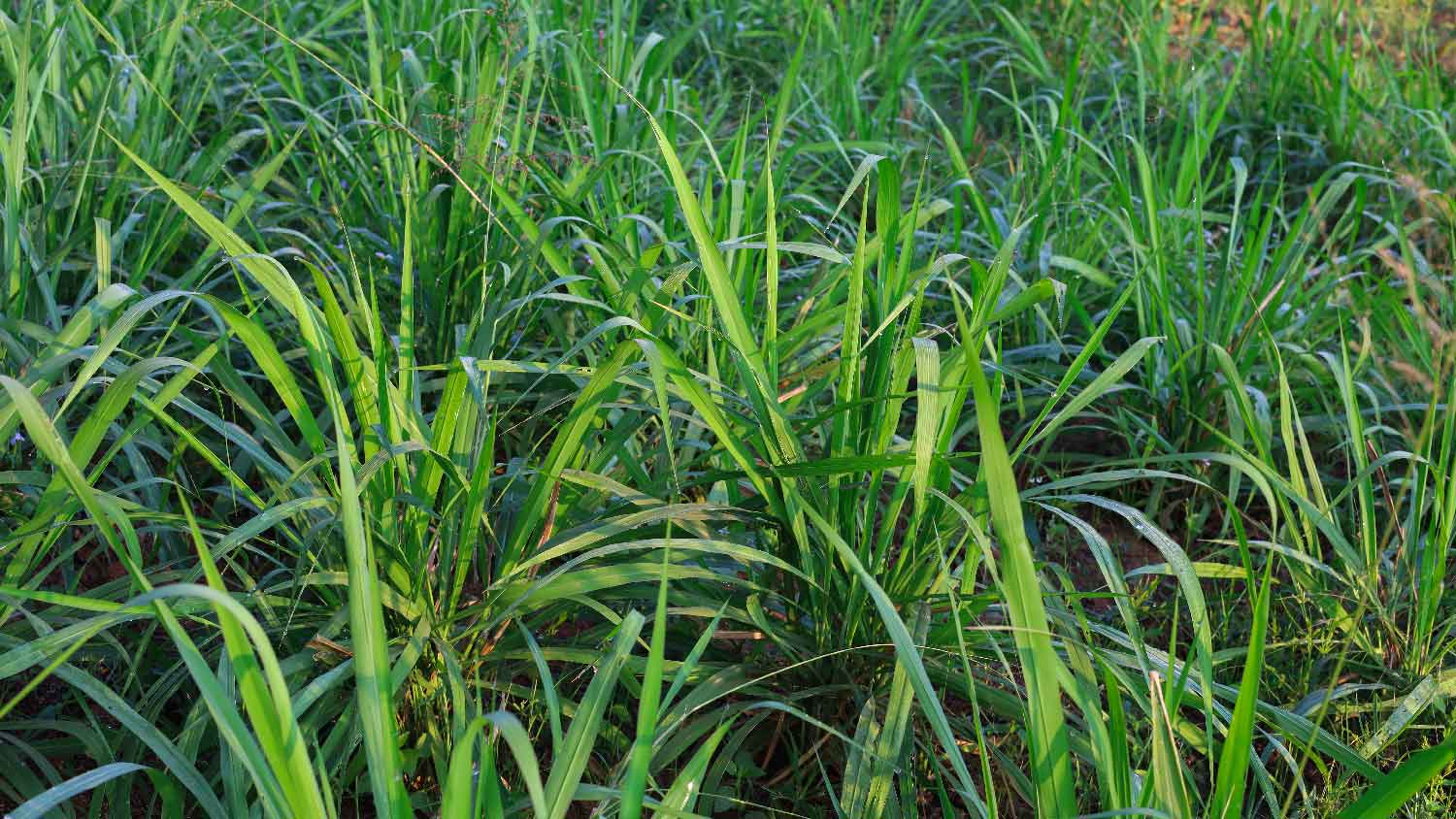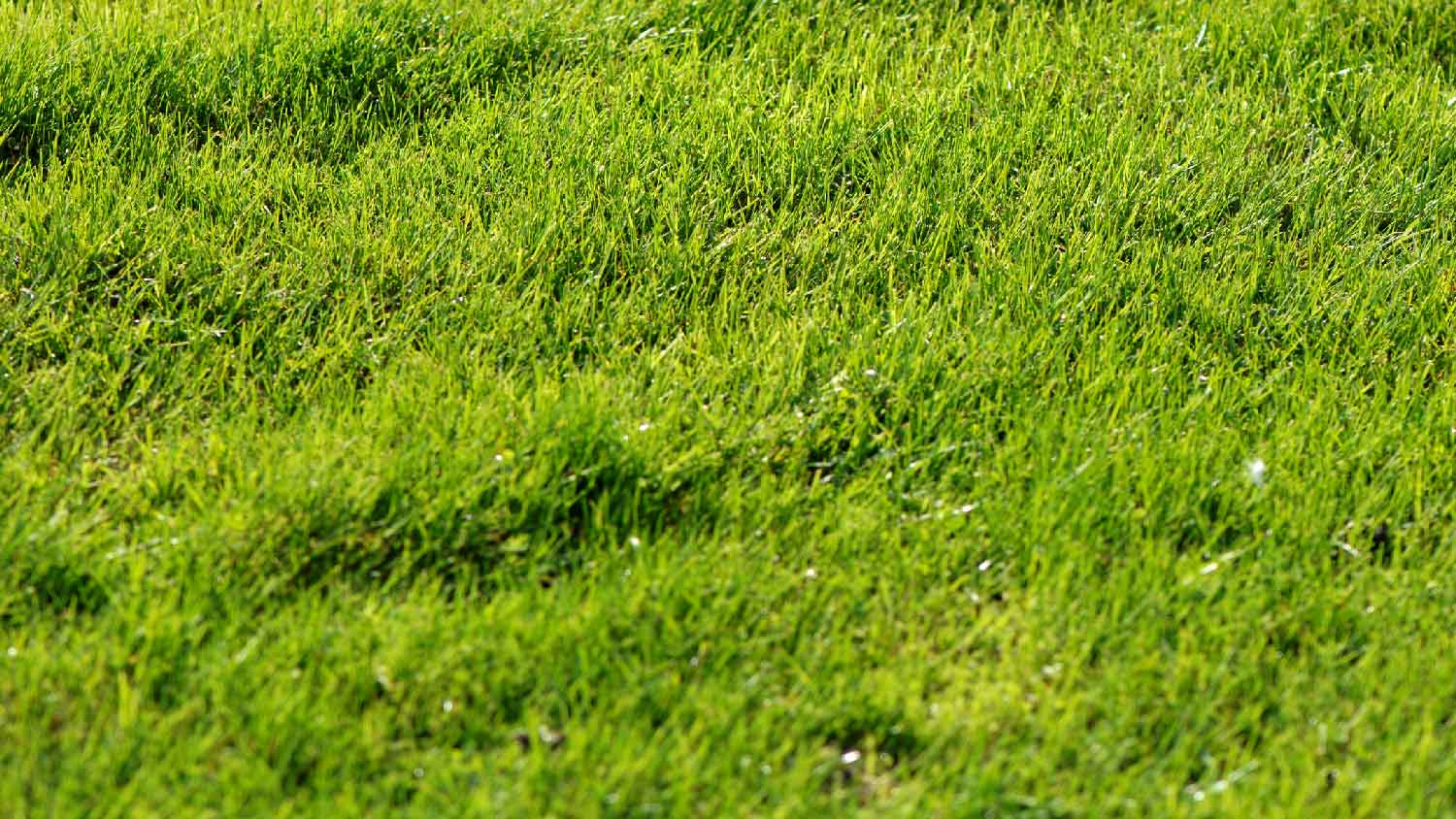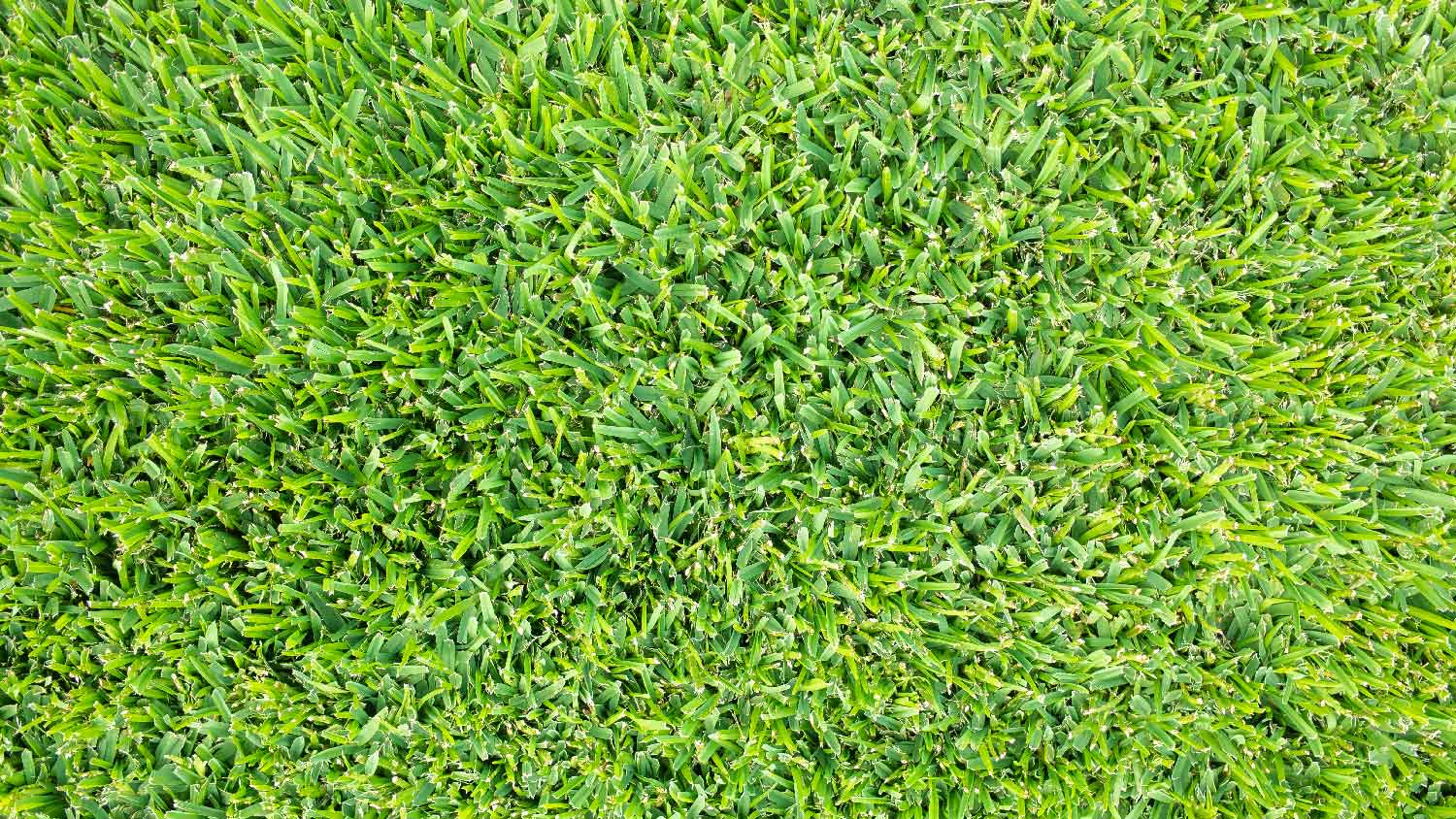Considering Buffalo grass or Bermuda grass for your next DIY grass growing or professional landscaping project? Here’s how they compare head to head.
Appearance: Tie
Both Buffalo grass and Bermuda grass can make healthy, vibrant lawns. Buffalo grass has fine, soft, bluish-green blades that many consider beautiful, but they can also fall in different directions and look slightly unkempt to those who prefer a more manicured look. Bermuda grass grows in a stiff, dense carpet and tends to look more manicured when cared for properly.
Color: Buffalo Grass
Both Bermuda grass and Buffalo grass may not stay green for as long as other types of grass. Bermuda grass can turn brown and go into dormancy early in the winter season. Buffalo grass, on the other hand, stays green later in the colder season but turns green later in the spring. The key difference is their ability to maintain color during droughts—Buffalo grass keeps its color, while Bermuda grass is quick to turn brown.
Softness: Buffalo Grass
Buffalo grass is known for its soft, fine texture and pleasant under-foot feel. Bermuda grass is denser and coarser, so it isn’t as soft to the touch.
Bermuda grass is one of the best grasses for high-traffic lawns. While it may not immediately bounce back after a session of heavy traffic, its ability to self-spread and grow quickly means it will fill in any sparse patches in no time. Buffalo grass is not well-suited for areas with high foot traffic.
Cold Tolerance: Buffalo Grass
Since Buffalo grass and Bermuda grass are both warm-season grasses, they do best in warmer climates with mild winters. However, Bermuda grass is notably sensitive and quick to turn brown in the cold, whereas Buffalo grass stands up relatively well to colder weather.
Heat Tolerance: Bermuda Grass
Bermuda grass is exceptionally tolerant of intense heat and thrives in hot, sunny climates. Buffalo grass, while also heat-tolerant, requires additional watering to maintain its color and density in extreme heat.
Shade Tolerance: Buffalo Grass
If you’re looking at Buffalo grass or Bermuda grass to cover a shady lawn, neither will be your best option. Both of these grasses need full sun to thrive, although Buffalo grass does have some shade tolerance. For lawns receiving partial shade, opt for more shade-tolerant grasses like St. Augustine, Centipede, or Zoysia grass.
Drought Resistance: Buffalo Grass
Both Buffalo grass and Bermuda grass have good drought tolerance once established, with extensive root systems that enable them to draw water from deep within the soil. Both can withstand long periods of water scarcity, but Buffalo grass requires less water to maintain its green color during drought periods.
Speed of Growth: Bermuda Grass
Once established, Bermuda grass grows fast, quickly recovering from foot traffic and spreading throughout the landscape. Bermuda grass has a reputation for speedy, aggressive growth that can even be considered invasive. In contrast, Buffalo grass is relatively slow to establish and grow.
Resistance to Weeds: Bermuda Grass
Thanks to its dense, carpet-like growth and quick spreading, Bermuda grass often chokes out weeds before they have a chance to establish. Buffalo grass isn’t nearly as dense, providing more space for weeds to pop up. However, if you don’t overwater a Buffalo grass lawn, weeds have a difficult time growing.
Resistance to Pests and Disease: Tie
When comparing Buffalo grass to Bermuda grass, they both have about the same level of susceptibility to insects and disease. Both are especially vulnerable to mildew, mold, and fungal diseases, so proper soil drainage is essential.












